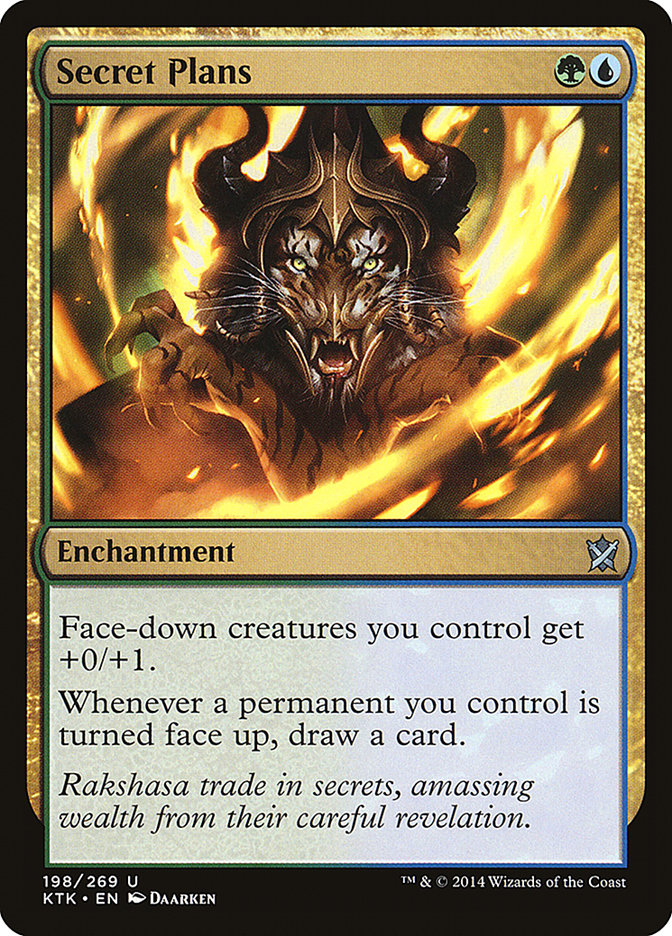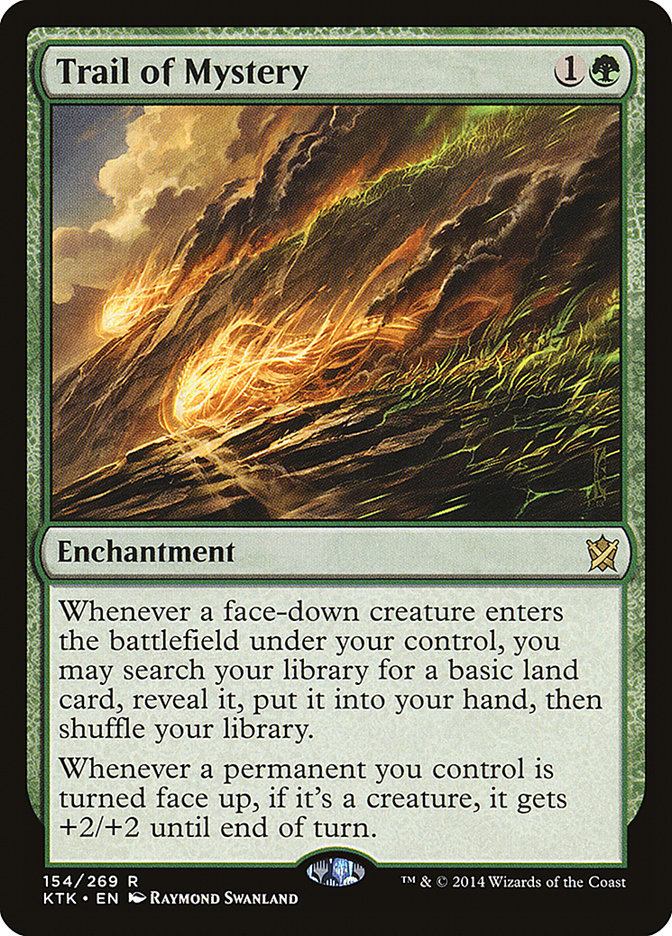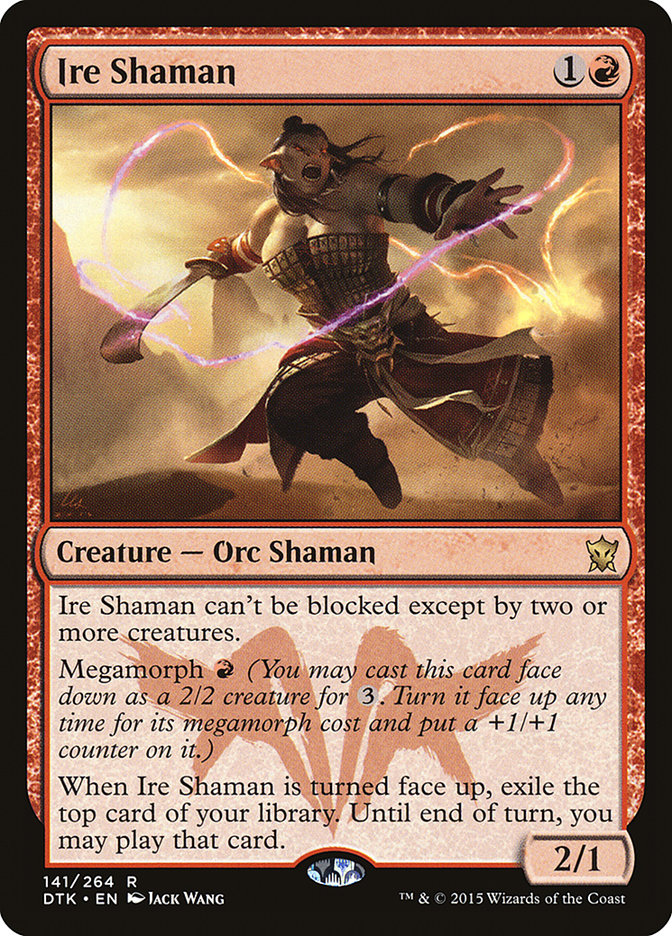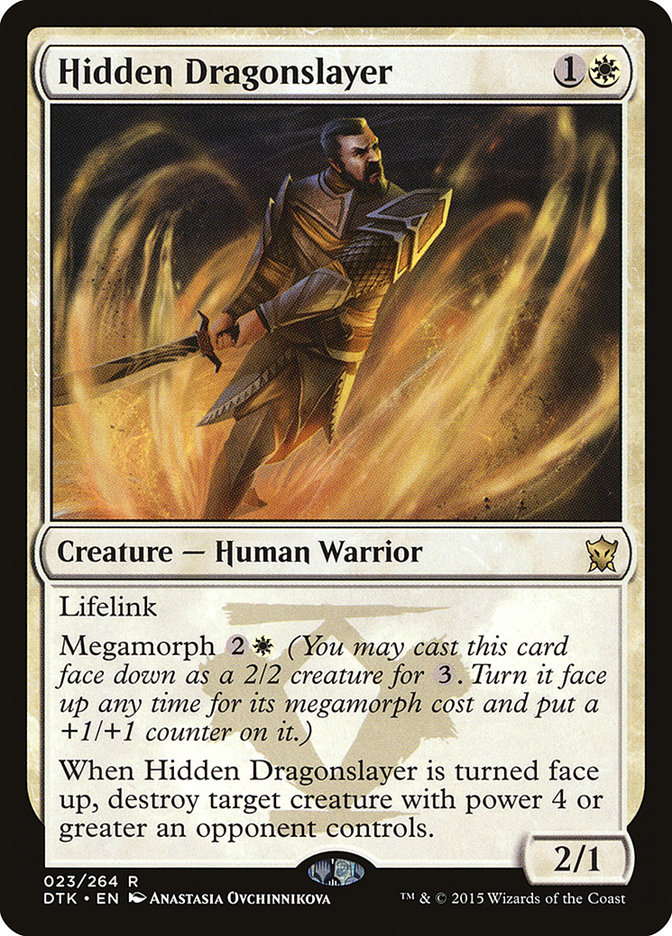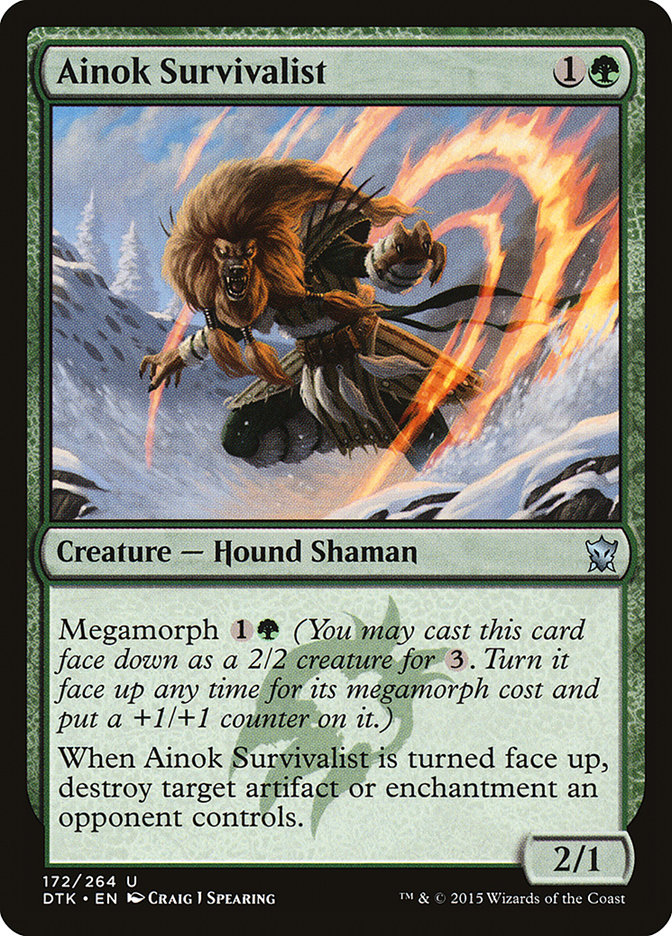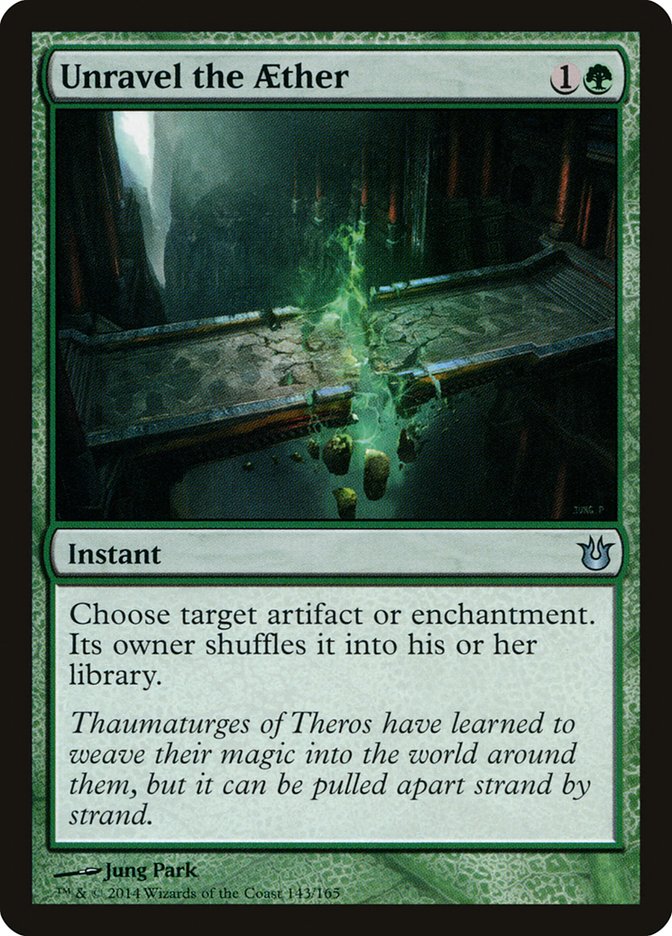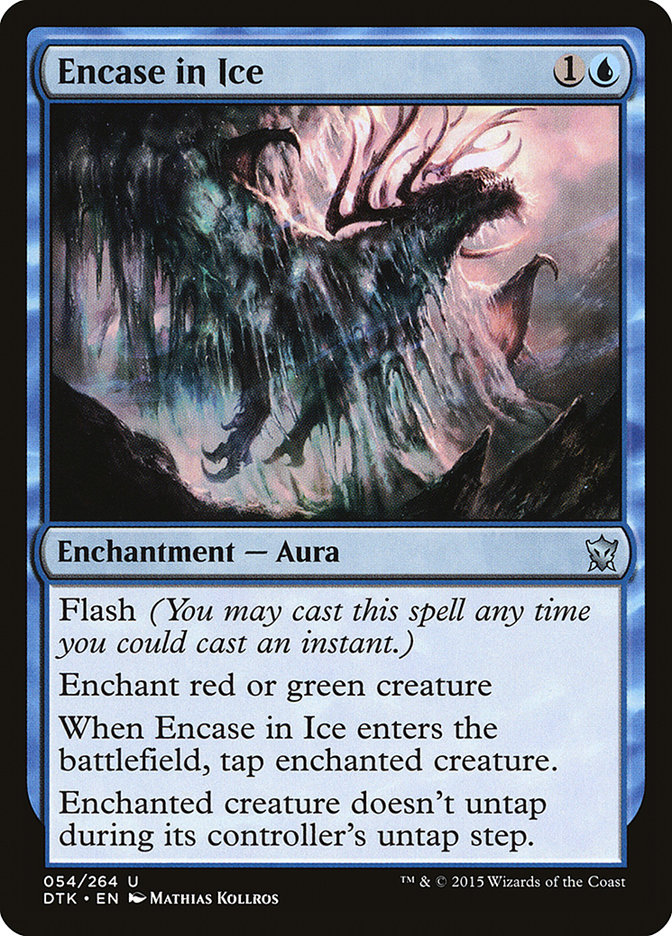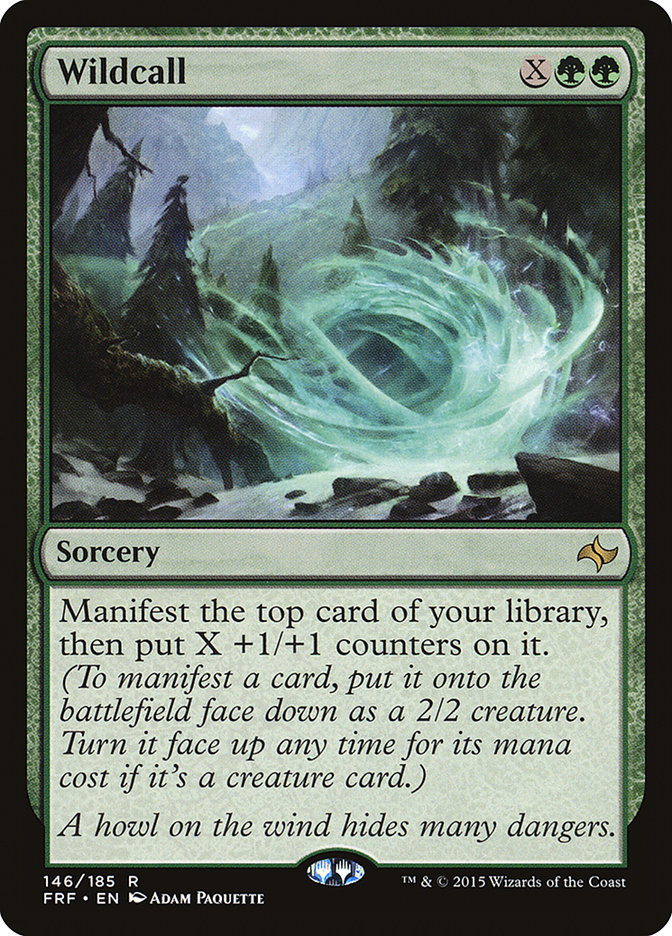Admit it: when you first read about Megamorph, you thought it was in the running for the worst-named mechanic in Magic history. I know I did. The prefix mega always feels like it should be followed by “Zord” and not much else, though we can
make an exception for Megatron.
[CEDitor’s Note: Talking about the word mega and not mentioning Mega Man is truly unforgiveable
Mr. Lansdell.]
The actual mechanic seemed largely unimpressive, even if it was on some very powerful cards that have been tournament staples since Dragons of Tarkir was
released.
Almost every megamorph-based deck has been green and white at the base, with both Bant and Abzan flavours. The red cards sporting the mechanic have seen
almost no play, with Ire Shaman popping up only sporadically. Black has fared worse, while white’s Hidden Dragonslayer has seen fairly consistent play in
at least the sideboard of several decks. Blue has had both Stratus Dancer and Shorecrasher Elemental showing up in successful decks, but is a distant
second to the one-two format-defining punch of Den Protector and Deathmist Raptor in green.
While watching coverage this past weekend and seeing Brian Kibler G/W list all over the place, people were reminded of the fact that Protector, Raptor
and Dragonslayer formed a powerful trio for much of the previous season of Standard. It was the deck tech on a U/G Devotion deck, though, that made me
wonder if we couldn’t pair something else with the two green powerhouses to make for an engine that had a high power level while allowing for some
synergies and interactions we did not have before.
Feeling Blue
As tempting as it is to play red just to make Ire Shaman a thing (I love that card so much), I think there is some value in a U/G shell. Along with Stratus
Dancer, we get to play both Icefeather Aven for more tempo and Shorecrasher Elemental as a beatdown machine. That gives us a bunch of ways to trigger our
Deathmist Raptors in the graveyard.
Playing a 1GG spell and a UUU spell in the same deck does seem ambitious, but bear in mind that both of them actually cost three colorless. Having the
ability to play both of our heaviest mana requirement spells face-down (and then only needing a single coloured mana to turn them up again) makes the
demands on our mana base a lot less taxing. Playing more things face down will also let us mask our lines a lot better, something that many Standard decks
playing morphs cannot do. Making our opponent spend removal on cards we might not actually need in play will help us stick our threats in the late game,
which is tremendously important against the removal-heavy Abzan decks.
Soothing the demands on our manabase will also allow us to play a few more basics than you might otherwise expect, which leads me to my next idea. Ever
since Khans of Tarkir was the draft format I have been in love with the Secret Plans + Trail of Mystery engine. Although I think we will find ourselves
with limited space in the list, I want to try and shoehorn this in. Protecting our face-down creatures from Wild Slash and Fiery Impulse will be huge in
this metagame, and drawing cards is rarely a bad thing. We’ll also be able to fish basics out of our deck fairly regularly, giving us more live draws in
the later game and making sure we can cast a face-up Deathmist Raptor if we need to.
The core of the deck basically builds itself, but the remainder is a little tricky. With Icefeather Aven and Stratus Dancer it would seem we are more of a
tempo-based deck, so we want to fill out the list with spells that keep the opponent off-balance instead of trying to completely shut them down. I like the
idea of Silumgar Sorcerer and Harbinger of the Tides as creatures with flash that can make the opponent stumble and both cards are powerful options to
return with a Den Protector flip. Imagine flipping a Protector, getting a Deathmist back, returning Silumgar Sorcerer to your hand and then flashing it in
to counter a Dragonlord Atarka, sacrificing the Deathmist Raptor. Yeah, I am not unhappy with that line of play.
Here’s the starting point for our list:
Creatures (28)
- 4 Icefeather Aven
- 2 Sagu Mauler
- 3 Stratus Dancer
- 4 Den Protector
- 3 Shorecrasher Elemental
- 4 Deathmist Raptor
- 1 Silumgar Spell-Eater
- 3 Silumgar Sorcerer
- 1 Bounding Krasis
- 3 Harbinger of the Tides
Lands (25)
Spells (7)

This is a first pass but I like what we’re doing here. Evolutionary Leap feels very powerful in a deck with six flash creatures and a bunch of utility
creatures, but it’s possible it belongs in the sideboard. As the second copy we draw is redundant, we only have the two. Sagu Mauler is one of the best
creatures that nobody is playing right now and this feels like the best deck for it. With Crackling Doom and Foul-Tongue Invocation seeing far less play
right now, the Mauler is going to be nigh unkillable for most decks. The singleton Spell-Eater is in there to give some main deck resilience to
planeswalkers and to keep opponents honest, but again it may need to be present in higher numbers. Bounding Krasis is my other speculative include. It’s a
beefy threat with flash that helps us play the tempo game, either making two surprise blockers (maybe even one with deathtouch) or getting a blocker out of
the way.
We do have a fair amount of evasion in our maindeck, but we are heavily slanted to beat creature-based strategies. The Deathmist Raptor engine does give us
some staying power against control decks, and playing our Sagu Mauler face-down lets us get our win condition in under a counterspell sometimes, but we
might be soft to control. Both Kheru Spellsnatcher and Whisperwood Elemental would improve that matchup, but with control being such a small part of the
metagame right now I don’t think that’s the way we want to go. The non-creature portion of the list is where I see the most flexibility, so cutting some of
those or trimming the Icefeather Avens for some more resilience would be the preferred route.
We’re running 25 lands because we always want to hit five mana on turn 5. Although Trail of Mystery will make sure we never miss a land drop (or at least
it should), we do need to actually find it in order for that to happen. That might mean inverting the Plans/Trail numbers, but I would rather run the extra
one or two lands to start with and see if we flood out.
Why No White/Red/Devotion?
Don’t get me wrong, I was tempted. Hidden Dragonslayer is a very good card in a format defined by G/R Devotion, Ensoul Artifact and red decks (against
which Dragonslayer can sometimes find a target and always present a lifegain threat), Ojutai’s Command can do some work returning a fair few threats in the
deck while providing some additional value, Mastery of the Unseen is a great sideboard card. The arguments in favour of adding white are certainly
persuasive.
That is, if we want to build that sort of deck. Ultimately what we are doing here is building a tempo deck, or trying to at least. Although white’s options
are powerful, they send us down a different road and will cost us some of the morph engine that we wanted. I’ll note that it’s possible a Bant list could
be a more powerful one, but if all I did was try to build powerful decks I would have a lot less fun!
With our ability to bounce (and tap down, after sideboard) any threat that we aren’t able to counter, destroying them outright loses some appeal. As we’re
looking to chip away at the opponent for the most part, we’re happy to force them to keep reinvesting mana to fight us. I have been at times very impressed
with Ojutai’s Command while at other times I have resented having to keep four mana up to represent it. I think it is best in a deck that also runs
something like Collected Company or some other four-mana instant to keep the opponent guessing.
Red does give us access to Ire Shaman and some strong removal, but otherwise it’s not doing much for us. There is a school of thought that says that using
taplands makes for a free splash with the tri-lands from Khans, but with Trail of Mystery in the mix I would much rather have access to more basics.
The devotion angle was the most tempting as Thassa is remarkably powerful and we are already running eight enchantments to protect her from Dromoka’s
Command. Master of Waves is a great trump against Mono-Red Aggro decks and similarly hard for devotion decks to battle through without Polukranos. He also
buffs Shorecrasher Elemental as a nice little plus on the side. However going down that road would mean that we lose some percentage points against grindy
Abzan decks by cutting the Raptor + Protector package, and those decks also have the easiest time removing both Thassa (with Abzan Charm) and Master of
Waves (with just about any removal they might have). As Abzan is still such a large part of the metagame, I would rather avoid playing into its strengths.
Sideboard Possibilities
Our sideboard does somewhat reflect our need to strengthen the control matchup, giving us access to a full four Negates plus the singleton Ugin. With our
propensity for face-down creatures, Ugin’s board wipe will often leave us with a board presence in addition to the big dragon while the opponent is wiped
clean. The only possible problem I see with him is that we will need to have at least ten mana available to cast him against blue-based control, putting us
behind a little in the Ugin race. That’s assuming they bring it in against us at all.
Ainok Survivalist and Unravel the Aether might be overkill, and it’s possible I should go with three Survivalists and just turn the extra slot
into another Master. Although Unravel helps us deal with Hangarback Walker and Darksteel Citadels with scissors, we can already bounce those things without
much trouble. If Constellation decks do start to increase their presence though, we’ll want the extra outs.
Encase in Ice is the most flexible card in the sideboard. It comes in against G/R Devotion, Mono-Red Aggro and possibly even Abzan decks. We never want to
bounce a Siege Rhino, and locking down a Deathmist Raptor is sometimes preferable to killing it. Feed the Clan is one of those cards that I wish I didn’t
have to include, but probably do. Getting four power might be a little rough, but Trail of Mystery can help us out there.
What Didn’t Make the Cut?
We’ve discussed Whisperwood Elemental, a card that is no doubt powerful and does some pretty wonderful things in a deck as densely packed with morph
threats as this one. The thing is, I don’t think we want to be tapping five mana on our own turn. If we do go this route, it will be in place of the
Maulers or the maindeck Leaps.
The more I look at it, the more Bounding Krasis looks like the kind of card we want in this deck. That it has no evasion, doesn’t morph, and isn’t
resilient is a little concerning though, and that’s what keeps it down to a single copy for now. I have high hopes though.
One card I have been aching to make work is Wildcall. Were it an instant I think it would be all over the place by now, but as a sorcery it hasn’t really
had a place to excel. Although it makes any creature it hits into a game-ending threat at higher values and can sneak morphs out on the cheap in the early
game, I think the mana investment at anything other than GG is too much for the payoff against most decks. Believe me, I wish that weren’t the case.
Granted the ceiling is very high, but the floor is in the sub-basement and therefore too risky.
I’ll be taking this for a spin in the coming weeks and will report back on the viability or lack thereof. With things starting to settle down, both in the
format and in my travel-soaked summer, the brewing bug is starting to sink its teeth into me now. Hopefully it doesn’t inject hallucinogens.
Until next time…Brew on!


